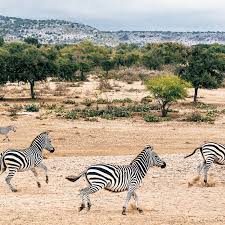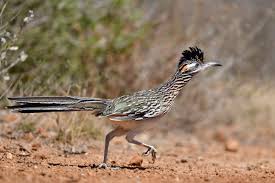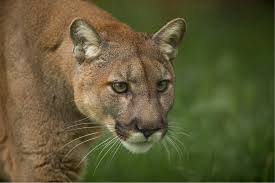The history and development of Texas wild life conservation dates back to the late 19th century when concerns over the dwindling populations of several game species, such as bison and pronghorn antelope, led to the establishment of the Texas Game, Fish and Oyster Commission in 1895.
Texas is a state located in the southern region of the United States. It is the second-largest state in the country in terms of both area and population, with a total area of 268,581 square miles (696,241 square kilometers) and a population of over 29 million people.
Texas is known for its diverse geography, with a variety of landscapes including deserts, mountains, forests, and coastline. The state’s major cities include Houston, San Antonio, Dallas, Austin, and Fort Worth.
Texas has a rich history, with a mix of Native American, Spanish, Mexican, and American influences. The state was an independent republic for nine years before joining the United States in 1845. Texas played a significant role in the Civil War and has a long history of oil production, cattle ranching, and agriculture.
Texas is also known for its culture, including country music, Tex-Mex cuisine, and the famous cowboy culture. The state is home to a number of famous landmarks, including the Alamo, the Texas State Capitol, and the Space Center Houston. Additionally, Texas is a diverse and dynamic state with a rich history and culture, as well as a growing economy and population.
Read Also: Top 14 Health Benefits of Broccoli
History and Development of the Texas Wild Life

The history and development of Texas wildlife conservation dates back to the late 19th century when concerns over the dwindling populations of several game species, such as bison and pronghorn antelope, led to the establishment of the Texas Game, Fish and Oyster Commission in 1895.
The Commission was responsible for managing and conserving the state’s fish and wildlife resources, as well as enforcing hunting and fishing regulations.
Over the next several decades, the Commission underwent several name changes and reorganizations, with a focus on expanding its mission to include non-game species and ecosystem-level management.
In 1963, the Texas Parks and Wildlife Department (TPWD) was created as a merger of several state agencies, including the Game and Fish Commission, the State Parks Board, and the Soil and Water Conservation Board.
Since then, TPWD has become one of the largest and most comprehensive state wildlife agencies in the country, with a mission to manage and conserve the state’s wildlife and natural resources for the benefit of present and future generations.
TPWD manages over 1.3 million acres of state parks and natural areas, as well as more than 2.3 million acres of wildlife management areas and other public lands.
TPWD’s conservation efforts include habitat management and restoration, scientific research, regulation and enforcement of hunting and fishing regulations, and education and outreach programs. The agency also works closely with private landowners and other stakeholders to promote sustainable and responsible use of natural resources.
In recent years, TPWD has also been involved in a number of high-profile conservation initiatives, such as the restoration of the black-capped vireo and the ocelot, as well as efforts to combat invasive species and address the impacts of climate change on Texas wildlife.
Also, the development of Texas wildlife conservation has been shaped by a long history of hunting and fishing traditions, as well as a growing awareness of the importance of conserving and managing the state’s rich natural resources for future generations. Texas has a rich and diverse wildlife population, with a wide range of species found throughout the state.
Here are some examples of the wildlife that can be found in Texas:

Mammals: Texas is home to a variety of mammals, including the American black bear, coyote, gray fox, mountain lion, white-tailed deer, and pronghorn antelope.
Birds: Texas is an important stopover and wintering area for many bird species, and is home to a number of endemic species, including the golden-cheeked warbler and the black-capped vireo. Other bird species found in Texas include the bald eagle, peregrine falcon, and sandhill crane.
Reptiles and amphibians: Texas has a rich diversity of reptiles and amphibians, including various species of rattlesnakes, lizards, and turtles, as well as the highly endangered Houston toad.
Fish: Texas has a number of freshwater and saltwater fish species, including catfish, bass, redfish, and snook.
Insects: Texas is home to a wide variety of insect species, including many species of butterflies, moths, and bees. Texas has a long history of wildlife conservation, and there are many state and federal agencies, as well as nonprofit organizations, that work to protect and preserve Texas’ wildlife populations.
These efforts include habitat restoration and protection, conservation education programs, and research into the behavior and ecology of various wildlife species.
However, many of these species continue to face threats from habitat loss, climate change, invasive species, and other factors, making continued conservation efforts crucial for their survival.
The Objectives of the Texas Wild Life
The objectives of Texas Wildlife are generally focused on conserving and managing the state’s diverse wildlife populations and habitats to ensure their long-term survival.
Some of the specific objectives of Texas Wildlife include:
Wildlife conservation: Texas Wildlife seeks to protect and conserve the state’s native wildlife species, including both game and non-game species, through habitat management, restoration, and protection.
Management of natural resources: Texas Wildlife works to manage and sustainably use the state’s natural resources, including water, land, and wildlife, to ensure their long-term availability for current and future generations.
Scientific research: Texas Wildlife supports scientific research into the behavior, ecology, and conservation of various wildlife species in Texas. This research helps inform management decisions and conservation efforts.
Education and outreach: Texas Wildlife provides education and outreach programs to increase public awareness of the importance of wildlife conservation and to promote responsible and sustainable use of natural resources.
Regulation and enforcement: Texas Wildlife enforces state and federal laws related to wildlife conservation, including hunting and fishing regulations, to ensure the sustainable management of wildlife populations.
Also, the objectives of Texas Wildlife are aimed at protecting and preserving the state’s natural resources and biodiversity for future generations, while also promoting responsible and sustainable use of these resources.
Read Also: How to Raise Ostrich for AgriBusiness
The Importance of the Texas Wild Life
Texas wildlife is important for several reasons which are:
Biodiversity: Texas is home to a wide variety of wildlife species, including many endemic and threatened species, making it a biodiversity hotspot.
These species help maintain the health and balance of local ecosystems and provide important ecological services, such as pollination, seed dispersal, and pest control.
Economic benefits: Wildlife-related recreation, such as hunting, fishing, and wildlife watching, generates billions of dollars in economic benefits for the state of Texas each year.
These activities create jobs, support local businesses, and provide revenue for conservation efforts.
Cultural heritage: Texas wildlife and outdoor traditions, such as hunting and fishing, are deeply rooted in the state’s culture and heritage.
Preserving these traditions and the wildlife they rely on is important for maintaining the state’s unique cultural identity.
Ecosystem services: Texas wildlife also provides important ecosystem services, such as water filtration, nutrient cycling, and carbon sequestration, that help maintain the health and productivity of local ecosystems.
Climate change resilience: Texas wildlife and habitats are also important for building resilience to the impacts of climate change, such as extreme weather events and rising temperatures.
Protecting and restoring natural habitats can help maintain their ability to store carbon, provide habitat for wildlife, and maintain healthy ecosystems.
Additionally, the importance of Texas wildlife cannot be overstated. Protecting and conserving these resources is crucial for maintaining the health and productivity of local ecosystems, supporting the state’s economy, and preserving its cultural heritage for future generations.

